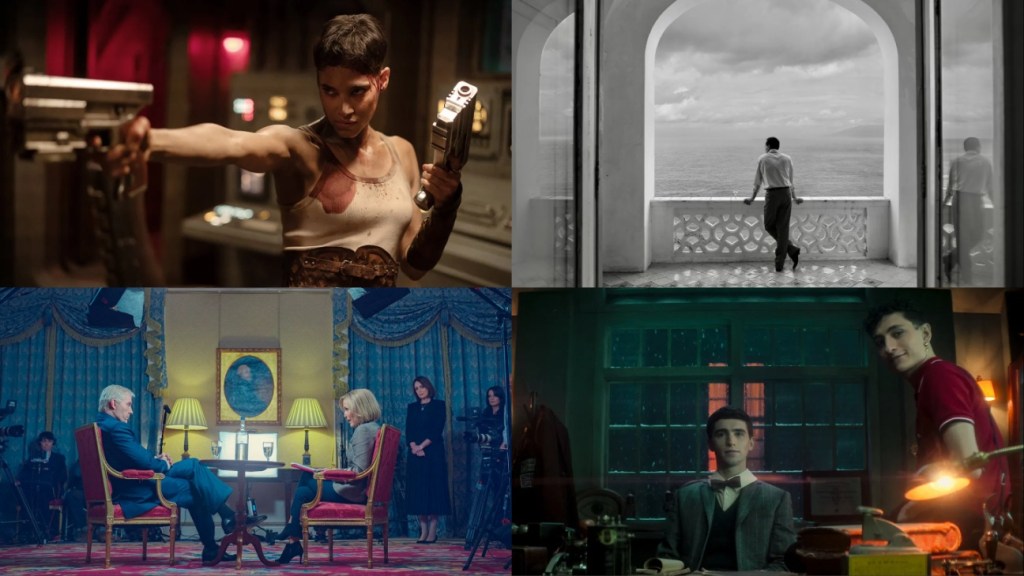On April 18, Netflix announced that it had “gone” — aka terminated — its physical world DVD rental option. The final picture show, in the form of 5-inch floppy disks personally delivered to your door in red envelopes, will be discontinued on September 29, 2023. After 25 years of mail-order interface, “DVDs are ready,” Netflix co-founder Marc Randolph explained, adding an unsentimental kiss: “Thank you for your service.”
While it was only inevitable that Netflix would live up to the promise embedded in its name, the announcement hit many like another death rattle from the sickbed of physical media, that sonorous label for a record album, film reel, or DVD box set that you can actually get your paws on and collect. Increasingly, there’s only one way to press play in home entertainment, and that’s by logging in and streaming (or downloading) a digital file.
Netflix’s disc toss feels like a crucial pivot, as the company’s evolution aligns seamlessly with the second tier in the evolution of the practicality of watching movies at home. The first stage, of course, was television, which broke through the noise of Hollywood in the immediate post-war period. The second phase started with VHS, was crowned with DVD and now seems to have come to rest with digital streaming, which is where we all come in.
Introduced in the mid-1970s, VHS (Video Home System) cassettes were the first major revolution in home entertainment since the television became essential living room furniture. One way to relate to the new video technology was to seize the means of production (video cameras and blank tapes) and create do-it-yourself productions that documented weddings, bar mitzvahs, and more. The other way was to let the pros do it and take home a feature film about the new format.
Ironically, the gateway drug wasn’t a commercial movie title, it was a fitness program Jane Fonda’s workout. In 1982, the toned actress did for VHS and player purchases what Milton Berle did for televisions in 1949. Fonda’s tape retailed at $59.95, which was worth the price of a 90-minute lesson played daily, but the return on investment for a once- or twice-watched feature film was less attractive: Bladerunner, Star Trek II: The Wrath of KhanAnd A policeman and a gentleman (all 1982) retail for $39.95; Premium selection like Blown by the wind (1939) and Pinocchio (1940) sold for a shocking $79.95 for a sticker. VHS tape prices gradually declined – 1986 top guns retailed for $26.95 — but in an era when dating was cheaper top guns Instead of purchasing the VHS, many consumers opted for temporary storage rather than permanent ownership.
Although big companies like Hollywood Video and countless corner shops stormed into the rental market, the emblematic and hegemonic outlet was Blockbuster Video Inc., which seems destined to go down in media history as the village forge of the Netflix auto repair shop. Founded in 1985 by Texan oilman David Cook, Blockbuster opened its Dallas flagship store with an inventory of 8,000 VHS and 2,000 Beta tapes (The loser in the decades-long “format wars”, Betamax, was a superior but short-lived analog videotape format from Sony.) Blockbuster, which specializes in rentals, not sales (“band sales margins are pretty crappy,” Cook said), required no membership fees and charged $1 to $2 per rental, depending on the title.
The company took off like a rocket. The business model was simple: high traffic revenue, convenient branch locations, a wide selection of films with clearly labeled categories, fast computerized checkouts, and after-hours return bins. By 1994, the year that Viacom acquired Blockbuster, it had sucked up 20 percent of the market. By 1997, the share was 27 percent, three times more than its closest competitor, Hollywood Video.
Members of a certain generation may remember the ritual of a Friday night pilgrimage to Blockbuster to book the weekend’s entertainment — the aisles full of parents and teenagers digging into the latest copy of a hot new release. By 1999, Blockbuster – commercially nicknamed “McVideo” – operated approximately 6,500 stores worldwide, serving 91 percent of American homes that owned a VHS player, a market penetration almost equal to that of television.
In 1997, the introduction of the Digital Versatile (non-Video) Disc threatened to expand, not disrupt, the video rental market. Early adopters (including many young men) have flocked to disc in droves. Only two years later, 1999 was celebrated by the trade press as “the year of the DVD”. Fans and techies touted the virtues of DVD’s higher resolution and capacity for additional “extras,” but another quality proved no less transformative: the size of the format, thin and light, easily slipped into a mail slot.
Enter Netflix. In a recent thread on Twitter, Marc Randolph recalled the budding company’s salad days of how co-founder Reed Hastings and himself (“two Silicone Valley Geeks”) envisioned a “DVD rental idea by the mail” based on a ” No-Due” appointments, subscription model without late fees” and online orders. “It’s definitely not going to replace the video store,” Randolph said billboard 1998, although he probably already had the stationary competition in his sights. (The longer version of the origin story is told in Randolph’s The birth of Netflix and the amazing life of an idea that will never workreleased in 2019, a likely blueprint for a future Ben Affleck-Matt Damon film.)
For $4 per title, the customer purchased a seven-day DVD rental that could be returned in a pre-addressed, pre-paid label. No need to go to a store, no need to make quick selection decisions before another customer grabs your cassette. (Netflix shared an affinity with Blockbuster: It refused to trade in porn, “an absolute no-no,” Randolph noted.)
Netflix thrived until the dot-com bubble burst in 2000 and the company ran into liquidity problems. Randolph tells how he and Hastings, desperate for funds, went to Blockbuster to negotiate a partnership. Unable to stop himself from kicking the corpse of the defunct competition, he finds that the Blockbuster execs grinned and passed the deal on.
Around this time, the prime shelf space at Blockbuster, hitherto the privileged property of the VHS cassette, was being supplanted by DVDs. “I need a DVD player,” said every Blockbuster customer, eyeing the shelves.
Blockbuster was slow to take notice of the warning signs. “The company’s preferred argument — that 70% of US homes live within a 10-minute drive of a blockbuster store — won’t mean much if the user/viewer can stay home and make their choice,” noted trade reporter Denis Seguin in year 2000 at Screen. It didn’t venture into online rentals until 2003, at which point Netflix was the undisputed Bigfoot. Blockbuster filed for bankruptcy in 2010. Company obituary in The New York Times deserved a headline diversity: “Why bricks and clicks don’t always fit.”
Now Netflix has killed the clicks, at least the ones that called a US Postal Service agent to your door. But before movie buffs and pack rats get all too nostalgic for the demise of DVD delivery, they might remember how limited Netflix’s library of choices is. Like Blockbuster, of which maybe 100 copies are in stock The Blair Witch Project (1999) and not a single silent film, the bulk of Netflix’s streaming inventory comes from titles that opened in a multiplex mall in the 21st century. Writer and self-proclaimed “video store vixen” Kate Hagen did the math. “Right now, Netflix is streaming about 3,800 movies — less than half what the average blockbuster used to be.” (Well, not my blockbuster.) “For movies made before 1990, only 79 titles are currently streaming. If we go to 1980 or earlier, that drops to 36.”
The bottom line is, as always: the more this film exists only in the digital space, the more the decisions about availability are in the hands of the corporations, where monetization is the main criterion for access. From this perspective, the Netflix disc toss could have an archival benefit for physical media collectors: the upcoming sale of used DVDs on eBay.













